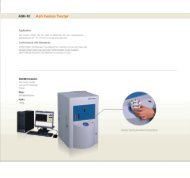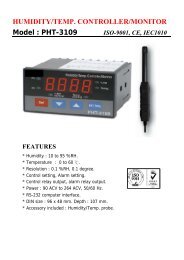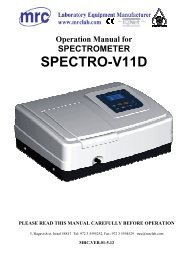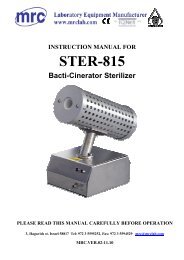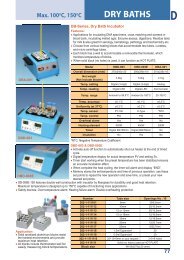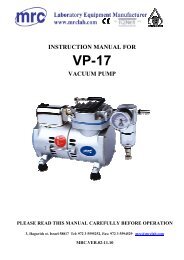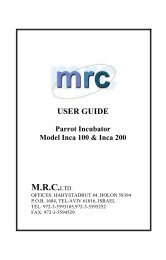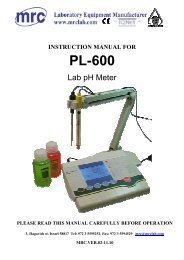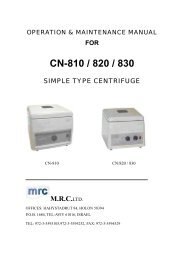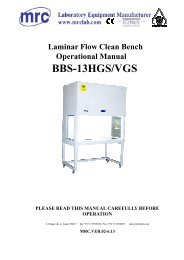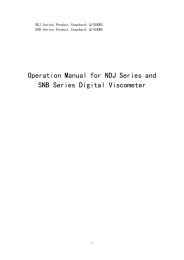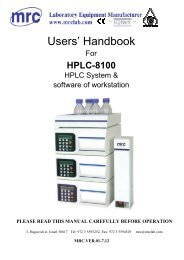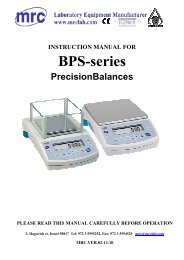Operation Manual for - Mrclab.com
Operation Manual for - Mrclab.com
Operation Manual for - Mrclab.com
You also want an ePaper? Increase the reach of your titles
YUMPU automatically turns print PDFs into web optimized ePapers that Google loves.
Ultrasonic milk analyzerAPPENDIX 7 PH MEASURING1. General in<strong>for</strong>mationPH probe is a unit, measuring the solution acidity or alkalinity degree. It ismeasured on scale of 0 to 14. The term pH is derived from "p", themathematical symbol <strong>for</strong> the negative logarithm, and "H", the chemicalsymbol of Hydrogen. The <strong>for</strong>mal definition of pH is the negative logarithm ofthe Hydrogen ion activity.2. pH ElectrodeFor pH measurement the milk analyzer needs a <strong>com</strong>bination electrode,<strong>com</strong>patible with most pH electrodes that have BNC connectors and zeropotential (the pH where the mill volt output of the electrode equals 0) near 7pH.2.1. Electrode partThe electrode is the most important part of the pH measurement. Theelectrode glass membrane is fragile and must be handled with care. Toprotect the glass membrane and to maintain activation, a protective rubbercap containing a suitable storage solution covers the glass membrane.2.2. Electrode care & Electrode maintenancepH Electrodes are susceptible to dirt and contamination and need to be cleanregularly depending on the extent and condition of use. At no time should onetouch or rub the glass bulb as this causes the build-up of electrostatic charge.2.3. StorageFor best results, always keep the pH bulb wet. An optimal storage solution <strong>for</strong><strong>com</strong>bination electrode is pH 4 buffer with 225 grams of KCl per liter. Tablesalt, NaCl, can be used if KCl is not really available. Other pH buffers or tapwater are also acceptable storage media, but avoid storage in de-ionizedwater. The protective rubber cap filled with the buffer solution provides idealstorage <strong>for</strong> long periods.2.4. After UseAfter measurement is <strong>com</strong>pleted, follow the sequence below <strong>for</strong> storage.- Wash the electrode and reference junction in de-ionized water.- Close the refilling hole by returning its rubber sleeve or stopper cap.(Necessary <strong>for</strong> only refillable electrode).- Store the electrode as mentioned above (see section Storage).<strong>Operation</strong> manual 78/98



